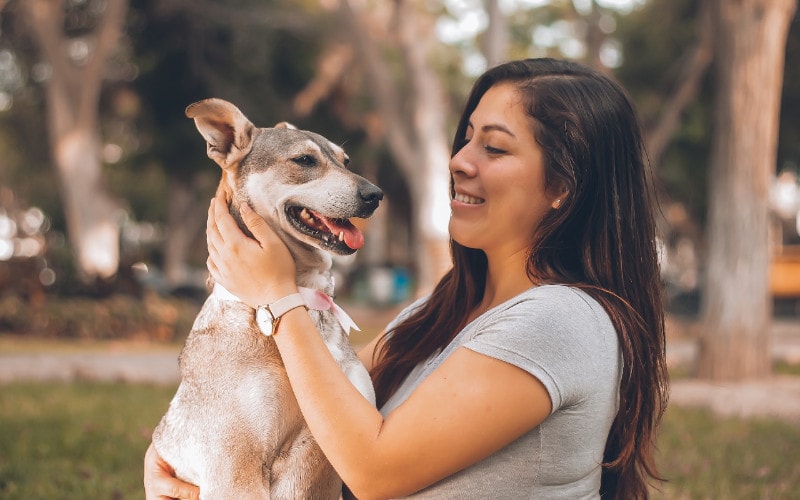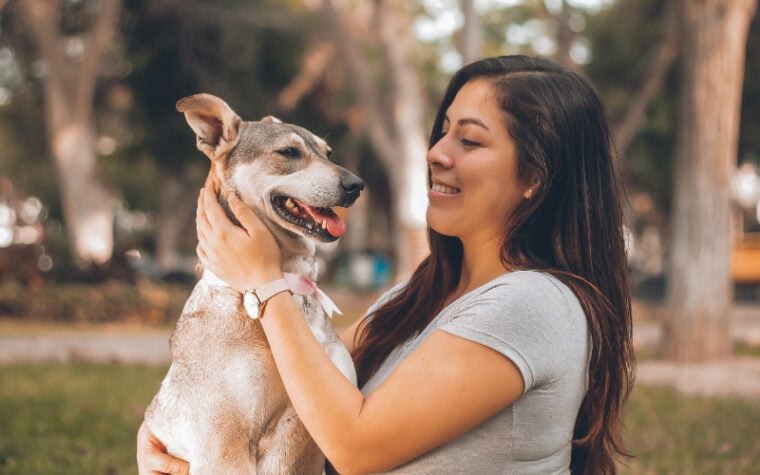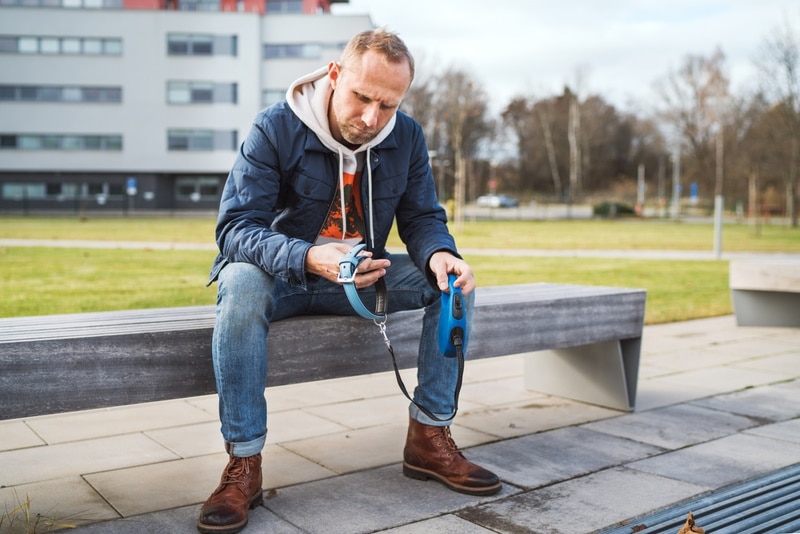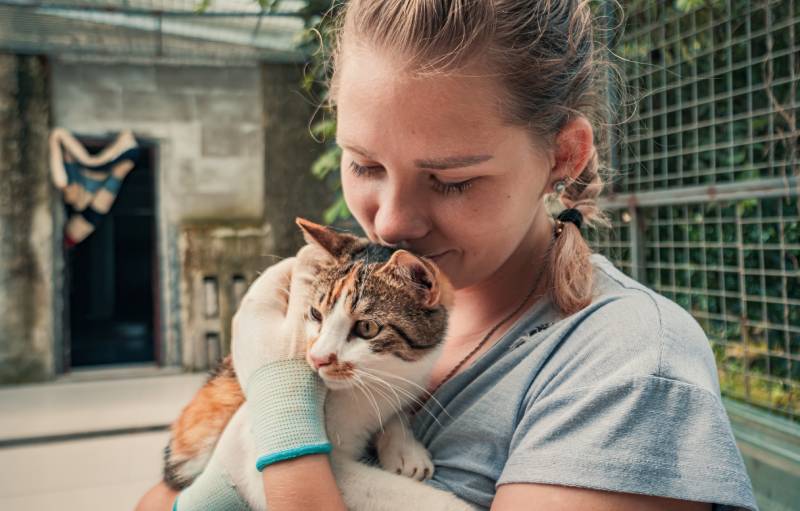- October 17, 2023
National Lost Pet Prevention Month 2023: When It Is & How You Can Celebrate


The month of July has been established as National Lost Pet Prevention Month, but many people have never heard of such an important event, let alone the cause that it’s highlighting. So, this guide goes over everything to know about National Lost Pet Prevention Month, including what the event is all about, how it can be celebrated, and what can be done for the cause during other times of the year.

National Lost Pet Prevention Month
The idea of National Lost Pet Prevention Month is to keep everyone’s animals safe and prevent them from becoming lost. Nobody wants to be in a situation where they need to find a missing pet, whether it’s a cat, a dog, or even a goat. The whole process can be downright stressful and heartbreaking. Furthermore, many people don’t know the steps that they can take to help ensure that if a pet gets lost, they can be found and reunited with their family.
Many pets end up in the shelter system every year or worse, never recovered at all. So, it’s crucial to bring attention to this important topic and help pet owners think about how they’ll handle having a lost pet if the situation ever arises. Being prepared for such a catastrophe can help ensure that time is not wasted while recovery efforts are taking place.

What National Lost Pet Prevention Month Is All About
National Lost Pet Prevention Month focuses on recovery after a pet has been lost, but a great deal of emphasis is also placed on avoiding a loss in the first place. According to Shelter Animals Count, a trusted pet sheltering data source, the number of pets that end up in shelters has increased by 18% since 2021. Dogs seem to be more affected than any other type of pet. During National Lost Pet Prevention Month, the goal is to inform pet owners of vital guidelines:
- Microchip Your Pets — Doing so can help reunite a lost pet with their family quickly if they are found and brought to a shelter or veterinarian’s office. Their chips can be scanned to find out the owner’s phone number, address, and other pertinent information that’s needed for reunification.
- Take Photos Regularly — Keep current photos of your pet readily available so they can be used for identification purposes if they get lost. Photos should be taken from various angles so those helping to look for your lost pet know exactly what features and characteristics to focus on when searching.
- Always Supervise Your Pets — Your pup might be good about going in the front yard to use the bathroom and then going back inside on their own, but it only takes one time for them to chase after another animal or get excited and roam away from home. Always supervise your pets when they are spending time outdoors.
If Your Pet Does Get Lost
- Start Looking Around the Neighborhood — There is no time to waste once you figure out that your pet has been lost. If they went missing from home, the first thing that you should do is comb the neighborhood for them. Don’t hesitate to call their name out loud. Stop and talk to any neighbors whom you happen to see during your search.
- Call All the Local Shelters — If you can’t find your pet in your neighborhood soon after they go missing, call all the local humane societies and rescue organizations. Let them know about your lost pet so they can keep an eye out for them as new rescue animals come in.
- Post Fliers — If the shelters have not seen your pet, start posting fliers wherever you are allowed to do so. Put them on park message boards, light and sign posts, trees, store windows, and everywhere else you can think of. Make sure your pet’s picture is included on the fliers. The more eyes looking for your pet, the better chance you’ll have of finding them.
- Take to Social Media — Get online, and post your flier on social media sites like Facebook, Twitter, Instagram, and TikTok. Tag your friends and family members so they can share your posts and spread the word. Ask for help on local forums and social groups. Request that your local news and radio stations reach out through their own social media accounts.
- Visit Shelters Regularly — Even if you have given information to your local shelters about your pet, they may not be able to recognize when your pet comes in because they have so much on their plate and many people involved. Therefore, it can be beneficial to visit the local shelters at least once a week (daily, if you can!) and look around to see if you can find your pet and take them back home.
- Never Give Up — It is never too late to find your beloved lost pet. Keep calling and visiting the animal shelters, and continue posting fliers. Keep resharing your social media posts, and above all, stay hopeful. It might take a while, but there is always a chance of reuniting with a lost pet.

If You Find a Lost Pet
- Go to the Vet or Shelter — Take the pet to a veterinarian to see if a microchip is in place. If so, the owner can be contacted and reunited with their lost pet right away. If not, look for fliers, and keep in touch with the shelters to work at reuniting a lost pet with their parents. If you can’t foster the lost pet that you’ve recovered, take them to a local shelter, preferencing “no kill” ones above others.
- Walk the Neighborhood — Statistically, the pet that you’ve recovered likely belongs to someone in your neighborhood. Therefore, walking around and inquiring with neighbors can yield results, whether that means finding the pet owner or at least getting a few leads.
- Post Fliers — Take a photo of the pet that you recovered, and make a flier out of it. Post it wherever you can, and figure out a way to vet potential owners (like requiring them to provide their own photos of the pet) before you release them to anyone.
- Check Social Media — You can pick up alerts about missing pets on social media by focusing on the area where you found the pet and the type of pet that you found. Search for these things on social media, and you might find a post about someone looking for the lost pet that you’ve recovered.
Celebrating National Lost Pet Prevention Month All Year
Even when it’s not July, there are a few things that you can do to help bring attention to this important campaign:
- Tell Your Social Media Friends — Start posting on your social media accounts when National Lost Pet Prevention Day is coming up to let everyone know about the event. Then, provide links to this article and others to help spread awareness.
- Volunteer — Take the time to help reunite lost pets with owners by volunteering at a local shelter. There are various tasks that can help maximize the chance that people will find their lost pets in a short amount of time.
- Go to a Shelter as a Last Resort — It’s best to keep a lost pet out of the shelter system if possible, as it can take days, if not weeks, for things to come together and people be reunited with lost pets if they have already been adopted out to someone else. Many times, a lost pet can be reunited with their owner within a couple of days, if not hours.


In Conclusion
Dogs, cats, and even animals like iguanas can go missing in the blink of an eye. Therefore, it is important to keep the possibility of pet loss in mind as an owner and how to prevent it. You should also know what to do if a pet does become lost for one reason or another and what should be done when a seemingly lost pet is found. Campaigns like National Lost Pet Prevention Month help bring attention to this important topic.
Featured Image Credit: Manuel Meza, Unsplash
Tags
What do you think?
Related Articles

New Puppy Checklist: Gear You’ll Need for Your New Dog
Getting a new puppy is really exciting, but before you welcome them home, it’s important to prepare your space for them. Since puppies need a

How Big Do Mini Poodles Get? Vet Reviewed Average Weight & Growth Chart – Dogster
The information is current and up-to-date in accordance with the latest veterinarian research. Learn more » When you buy a Miniature Poodle, you might not

Can Police Dogs Smell Nicotine? Vet Verified Facts & Info – Dogster
The information is current and up-to-date in accordance with the latest veterinarian research. Learn more » While cigarette sales have been declining steadily for decades,

How Old Is 5 in Dog Years? Vet-Approved Guide to Each Size of Dog – Dogster
The information is current and up-to-date in accordance with the latest veterinarian research. Learn more » A common method for calculating a dog’s age is

